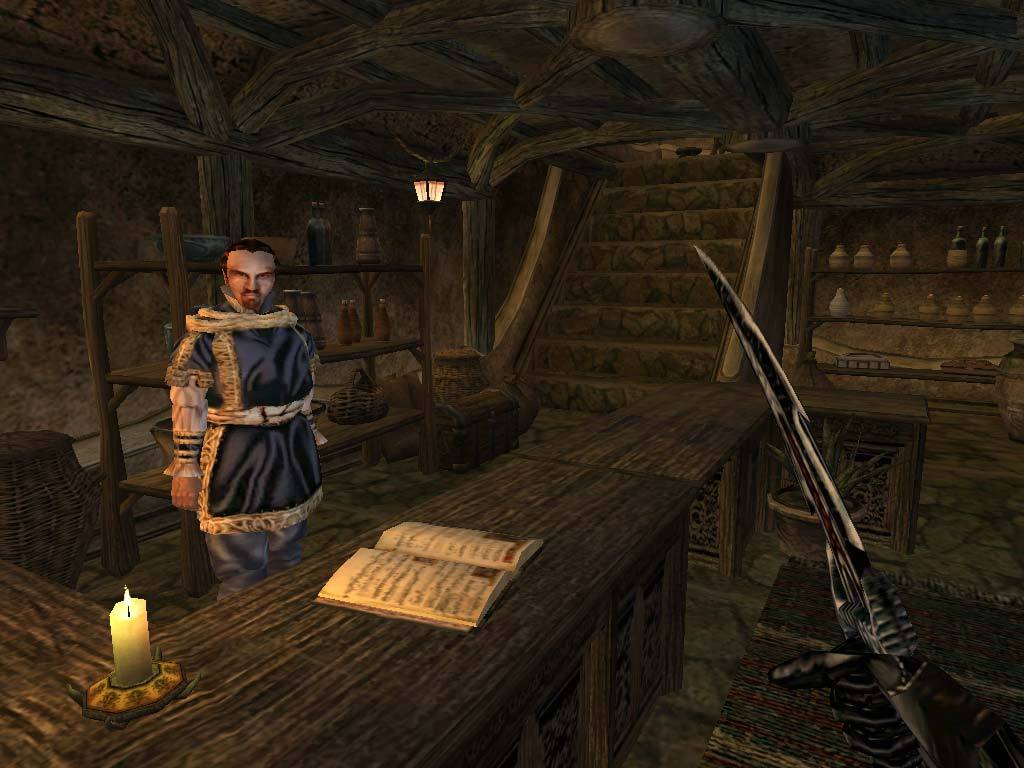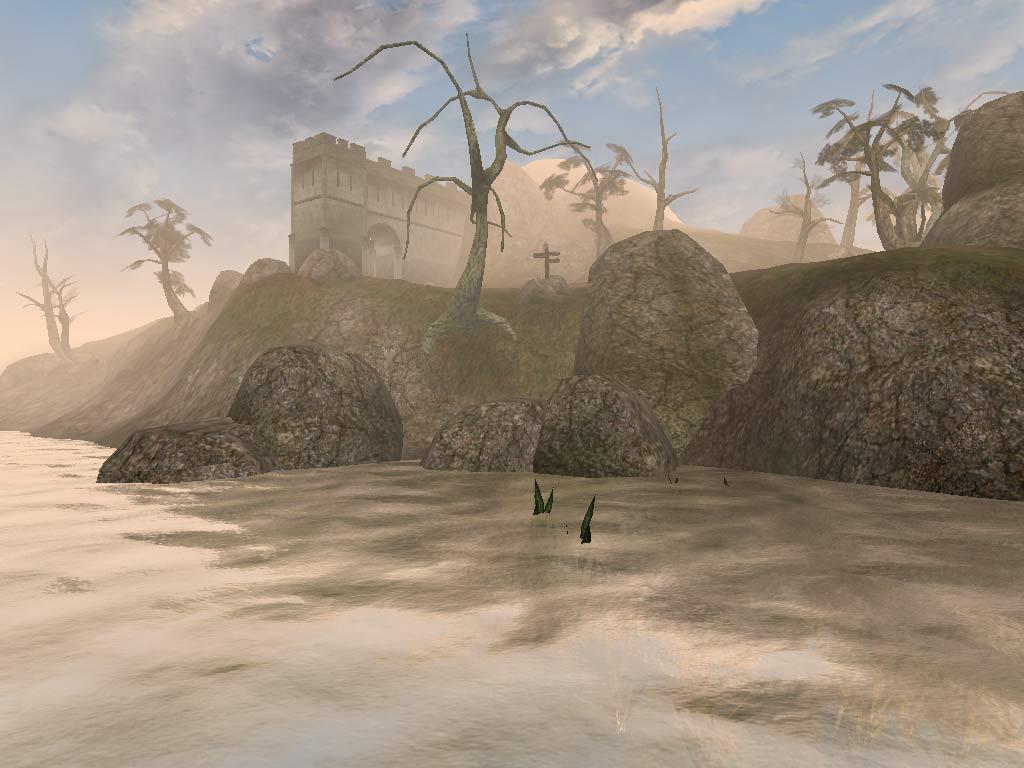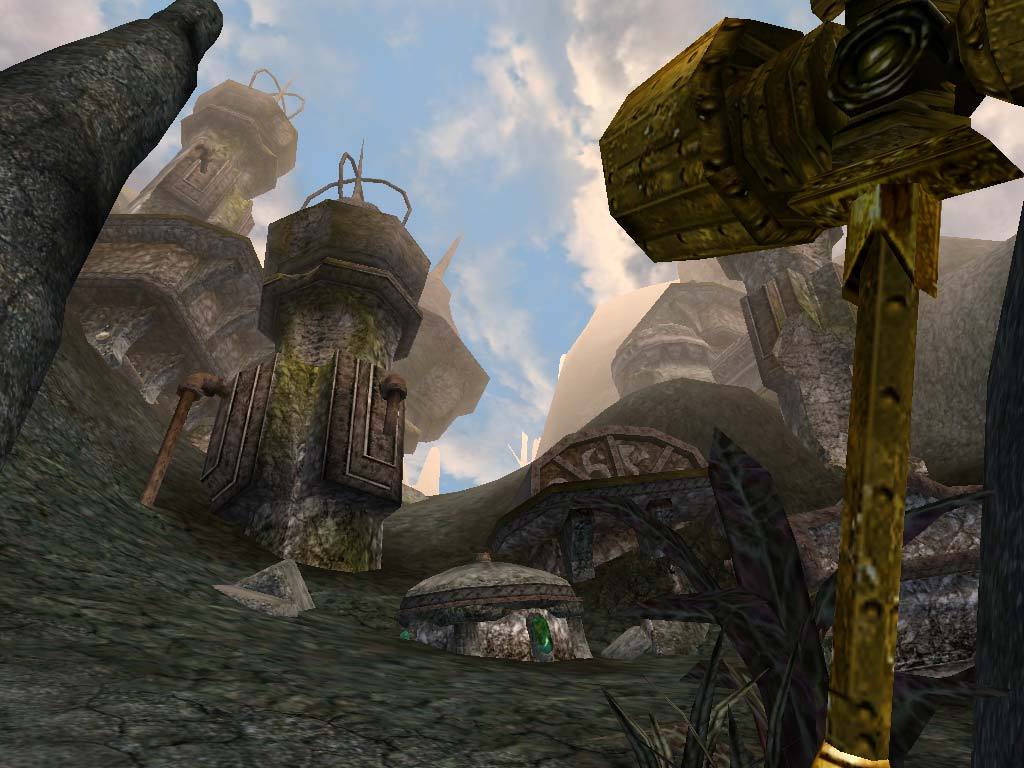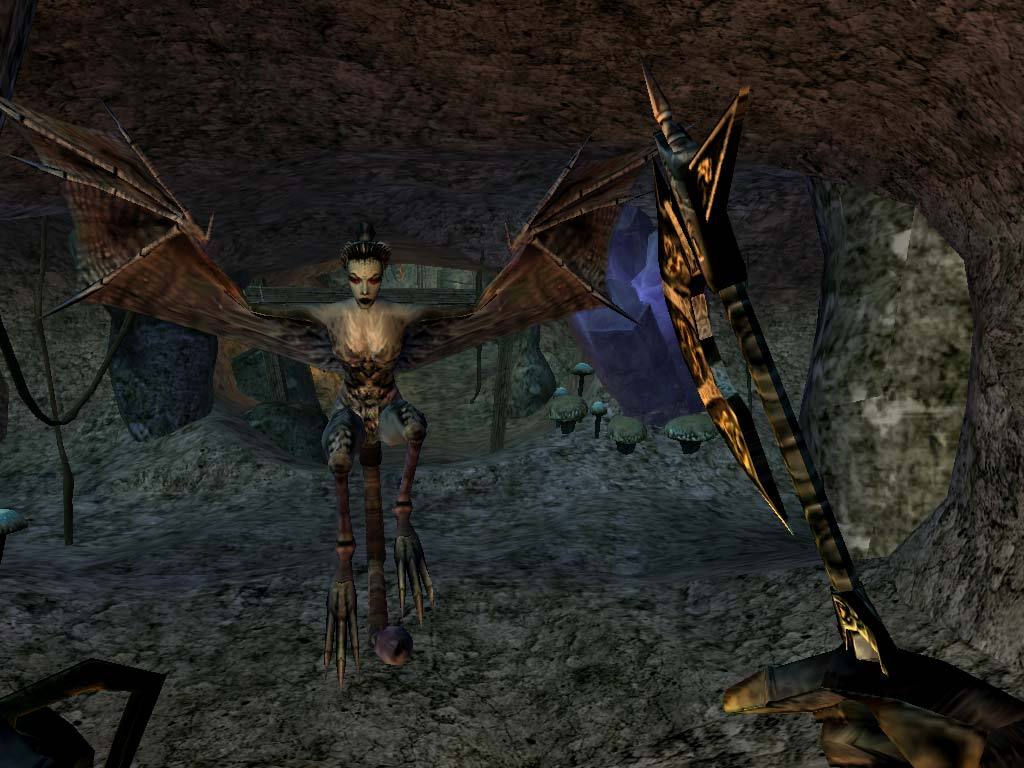These days most people remember the giant mushrooms. That memory might seem apt, given that The Elder Scrolls III: Morrowind was quite the trip when it released 20 years ago, but there was a lot more to Bethesda’s open world than psychedelic plants. So much more, in fact, that, with the possible exception of Shivering Isles – the masterful DLC for The Elder Scrolls IV: Oblivion – Bethesda hasn’t been able to make anything as deep, strange, or immersive since. Indeed, in many ways Morrowind marked the high point of Bethesda’s experimentation, if not a more general pinnacle for the industry’s willingness to experiment with large, expensive, open-world undertakings.
The introduction is unassuming enough: You wake up a prisoner on a ship headed for Vvardenfell, an island in Morrowind, itself a province of Tamriel – the continent where every Elder Scrolls game has taken place. The ship docks at the port of Seyda Neen, and your release paperwork acts as a character creator. Here you pick your class or create a custom class, which determines your major, minor, and miscellaneous (“misc”) skills. Major skills increase the quickest and make the most significant contribution to overall leveling up, while misc skills make no contribution to leveling up at all.
Oblivion shed the misc skills category, and The Elder Scrolls V: Skyrim removed these distinctions altogether. Looking back, however, it cheapened the role-playing fantasy. When your character can be a master of any skill, there is little incentive to role-play a particular approach or style. And your avatar, sufficiently leveled up, struggles to stand out amidst a crowd of similar jacks of all trades.

Morrowind’s skill systems are far from perfect, of course. The enemy AI is often astoundingly dumb. Even though the graphics are impressive by 2002 standards – particularly the implementation of weather effects and the day-night cycle – the animations feel stiff and floaty. That makes character builds focused on combat unsatisfying and extended dungeon crawls at times deeply frustrating. But the fundamental distinction between different skill types encourages replays and ultimately presents an interesting balance between nature and nurture – your character is naturally talented at some things, could be nurtured to passable skill at others, but can’t hope to master everything.
Skill choices complement an ambitious spell system, which allows the player to learn existing spells or craft their own in time. The player’s magicka pool or low skill level might make a spell inaccessible, but in principle any combination of effects is possible.
It’s difficult to forget stepping out of Seyda Neen, only to have an elf fall from the sky to his death immediately in front of you. His journal reveals that he crafted a spell that granted the power of flight. In reality, it’s a huge buff to jump, which allows the caster to leap across most of the game map but can only be used safely when countered with another spell for slow fall.
It might have looked absurd for characters to levitate by effectively walking through the air or to run so fast they triggered loading screens every couple of seconds – presumably one reason spellcrafting was simplified for Oblivion and left out of Skyrim. But spellcrafting in Morrowind trusted the player with a degree of freedom and experimentation rarely seen in open-world games since. In effect, Morrowind freely handed players the means to try to break it – a design approach usually associated more with immersive sims than with RPGs.

Meanwhile, Seyda Neen might look like many generic high fantasy settings at first glance – medieval-looking architecture, weapons, and armor, elves and orcs milling around, and copious references to imperial rule. The game’s limited draw distance and resolution at the time of release, especially on the original Xbox, obscured the sheer strangeness of the world beyond the port town.
But listen out and you’ll hear the guttural call of a silt strider, a giant flea-looking creature that is used for paid transportation between major towns and cities. Along with boats, gondolas, and some limited teleportation, silt striders represent the extent of Morrowind’s fast travel system. They might be less convenient than Skyrim’s unrestricted fast travel to any discovered location, but the limitation forces exploration and helps to cultivate the sense that the world exists apart from the player, rather than built specifically for their convenience.
The silt striders are also representative of Morrowind’s strangeness. In contrast to Oblivion, which can be more or less summarized as rolling green hills and forests, or Fallout 3, which inspired mods to add variety to its uniformly green-and-brown post-apocalypse, Morrowind combines a dizzying array of artistic, architectural, and genre influences.
There are the aforementioned oversized mushrooms, of course, but equally memorable are the steampunk-like dungeons of the Dwemer (which made a return in Skyrim), the flying jellyfish, the houses that look like they are built from the shells of giant crabs and specially cultivated flowers, the Mediterranean-like architecture of Balmora, or the great ziggurats that make up the capital Vivec, complete with a moonlet suspended above the city. Indeed, there is so much variety and so much that is unique, strange, or surreal that emerges as a result of those influences intersecting that it is impossible to do it real justice here.

To some extent, Morrowind’s story plays second fiddle to these influences. It’s a fairly typical “chosen one” narrative, as the player character works to prove themselves to be the reincarnation of a great hero by completing a set of preordained tasks, including uniting the land’s Great Houses and eventually leading an assault against the game’s main antagonist Dagoth Ur. In that sense, it shares many core beats with Oblivion and Skyrim.
But it’s in how Morrowind builds its world around this archetypal arc that it comes into its own. Morrowind’s religion, for example, is based on the Tribunal, a triumvirate of demigods that had once called Dagoth Ur an ally and that had come by their divine powers in suspicious circumstances. It’s a complex history, faith, and set of relationships, made more so by the fact that Vivec – one of the three demigods – still resides in the capital city of Vvardenfell and brings many human follies to his deific role. Like the capricious Greek gods, he is as vain and arrogant as he is brilliant.
The sense of wonder is reinforced by Morrowind’s sparse voiceover. Many characters meet the player with a line or two of voiced greeting, but the bulk of their dialogue is confined to text boxes. It leaves much to the imagination, as well as space for more elaborate and longer exposition.

That isn’t to say that the writing is on par with that of contemporaries like Planescape: Torment or Baldur’s Gate II. The dialogue system is based on a set of keywords that can be mentioned to any NPC, for example, rather than a choice between concrete prompts and responses. And much like with the bafflingly disorganized quest journal, it can make it difficult to keep track of conversations and progress. Often, it can seem like many NPCs have nothing new or interesting to say or repeat each other verbatim.
Nonetheless, in other ways these obtuse idiosyncrasies helped Morrowind‘s sense of immersion. When the game mechanics do such a poor job of holding your hand in such an interesting world, there is an incentive to learn and memorize what’s going on around you. It’s a shame that as Bethesda sought to streamline its quality-of-life features in later Elder Scrolls and Fallout titles, like with better quest tracking and inventory management, it also ended up streamlining out a lot of what made Morrowind worth playing. Perhaps it’s nostalgia talking, but it’s telling that my favorite part of Skyrim was Solstheim – the setting for its Dragonborn DLC and for Morrowind‘s Bloodmoon expansion.






Published: Apr 20, 2022 11:00 am